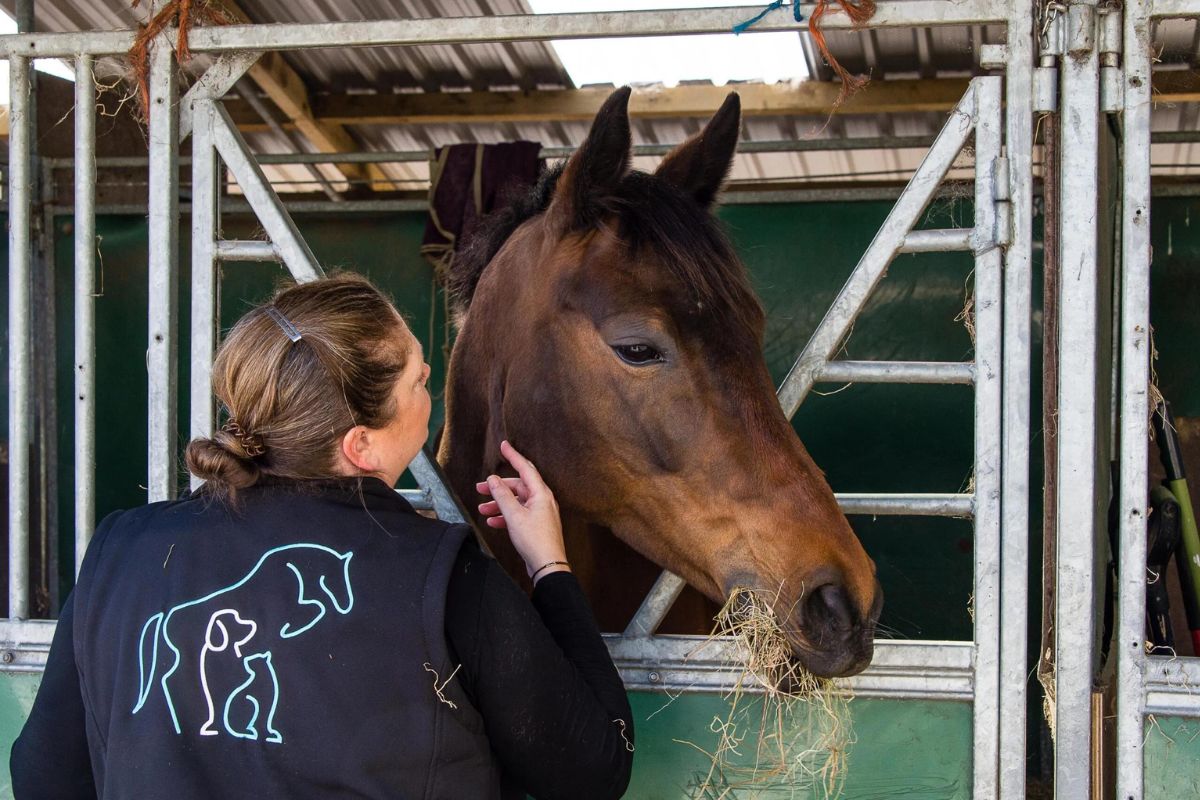Latest reforms to American Apprenticeships signal new opportunities for British training providers

Following Tom Bewick’s involvement in the inaugural conference of Apprenticeships for America, in Washington D.C. (March 12th-13th, 2024), here he outlines how the planned expansion of registered apprenticeship in the USA could more fully open the door to independent training providers and universities from the UK, who may themselves spot a business opportunity to get involved.
Winston Churchill, a staunch Anglo-American, once observed: “You can always count on Americans to do the right thing – once they have tried everything else.”
After decades of being an international outlier in the registration and delivery of formal apprenticeships, this position may be about to change. Two potentially game changing initiatives have recently placed the federal government’s policy trajectory on course for an apprenticeship system much closer in design and ambition to world-class models found in Europe and Australia.
Crucially, there is a renewed opportunity for UK-based providers of apprenticeship training and end-point bodies to support the expansion effort; by either forming their own ‘intermediary organisations’ across the pond; or by partnering with existing US firms that place registered apprentices with employers. This includes providing support to the emerging ecosystem of apprenticeship providers, with marketable products such as competency-based assessment plans, industry-backed credentials, virtual bureaucracy busting platforms; technical assistance and programme delivery expertise.
In a sign of how organised the American apprenticeship community is getting, the non-profit, Apprenticeships for America (AFA), has been formed in the last year or so to be a strong advocate for the entire skills ecosystem of intermediary organisations – terminology in the UK context that means independent training providers (ITPs), FE colleges and universities that deliver degree apprenticeships.
ITPs as intermediaries in the US context
The term intermediary is popular in the US because it has become shorthand for the fact that in order to expand the registered apprenticeship model, it is not always possible to assume that employers will simultaneously spring into action – i.e. recruiting apprentices and training them without some kind of intermediate support.
To put the current registered apprenticeship model into some perspective: the US labour market is made up of 132 million full-time employees, more than four times the size of the British workforce of 31.7 million. Yet, when it comes to the penetration of apprenticeship numbers, the UK trains around 2.5% of apprentices as a ratio to its full-time workforce, compared to just 0.32% undertaking apprenticeship in the US. In other words, the US should be training about 4 million apprentices per annum to match the position in England, compared to only 600,000 American apprentices that currently take advantage of this pathway.
US intermediaries carry out a number of functions in the registered apprenticeship model. Some act as sponsors, making it easier for employers to access and register programs with state and federal apprenticeship agencies. In return, these approved sponsors can access grants from the state or directly from various US-DOL grant calls. Other intermediaries are more end-to-end, not only guiding the employer through the whole registered apprenticeship process, but by also delivering the Off-Job-Training (OJT) or Related Training Instruction (RTI), which is broadly equivalent to the 20% off-job support ITPs and colleges must give to apprentices in England. While some grants have helped pay for these elements, acting as an incentive to US firms to get involved, the US-DOL has not yet succeeded in persuading Congress of the need to fully subsidise the OJT/RTI element of the apprenticeship journey, as is routinely the case in the world leading systems of the UK, Australia, Germany and Switzerland.
Uncle Sam is thinking big
Despite the relatively low numbers, US policymakers are still thinking big. The scale of the ambition has been captured by one of the leading advocates for transforming America as an Apprentice Nation. In his book, of the same title, Ryan Craig implores Congressional leaders and state legislators to bring back the ‘old idea of apprenticeship’ by massively bringing them to scale. He argues that $500 billion spent on loan finance to American higher education students, is leading to an epidemic of underemployment and too many grads in dead-end jobs. This is in stark contrast to the fact many of these young people could be earning and learning on the job, from day one, as well as securing an industry recognised credential in the process. In a hint of John Lennon, the angel investor and managing director of Achieve Partners, Craig, makes an impassioned plea to American elites:
‘Imagine a nation with apprenticeships across all sectors of the economy. Imagine a nation with as many large-scale apprenticeship programs as colleges and universities (four thousand). Imagine a nation where apprenticeship is as prevalent and respected as college, where every American has not only a direct, clear, and reliable pathway to a lucrative career, but also a paid pathway that doesn’t involve financial risk. Imagine a nation where forgiving $400 billion in student loans isn’t the federal government’s top higher education priority. It’s no exaggeration to say the American Dream would be renewed in an Apprentice Nation.’
It appears that lawmakers ‘on the Hill’ are starting to tune in. Just under a decade ago, the US Department of Labor’s (US-DOL) Office of Apprenticeship (OA), received an annual budget of $30 million to distribute as grants. In the current year, US-DOL’s apprenticeship budget has increased nearly eight-fold, to $235 million. All this has been achieved via policy stability and bi-partisan support, resulting in political agreement in an otherwise fractious and gridlocked, House of Representatives. Of course, to match the equivalent of the Apprenticeship Levy spent in England each year, Congress would have to appropriate funds to the OA on a corresponding magnitude of about $10.5 billion per annum. Realistically, this is still some way off.
However, delegates and CEOs of existing intermediaries, appeared upbeat at the inaugural conference organised by the advocacy group, Apprenticeships for America. They are confident that the goal is within reach.
State-led experiments
In some cases, a handful of state apprenticeship systems are already leading the way. Oklahoma is paying companies up to $10,000 per apprentice where intermediaries help them to create for each individual a paid learn and earn opportunity. California, an economy that would rank in fifth place ahead of the UK (in nominal GDP terms), if it was a country, has set an ambitious target of reaching half-a-million apprentices on program by the end of the decade. Intermediaries operating in the sunshine state can earn up to $3,500 per apprentice, out of a total financial pot of $175 million between 2023-25.
Two recent developments at the federal level also signal this potentially extraordinary path to growth.
Presidential Executive Order to Expand US Apprenticeship
A fortnight before the conference, President Jo Biden had signed a ground breaking Executive Order. The order directs all branches of the federal government to use the registered apprenticeship program in its future recruitment of talent. Government departments have been given 6 months by the White House to identify occupations to the OA, that can be made suitable for apprentices and therefore adding significantly to the scaling up effort. No estimates have been provided by the federal government as to how many apprentice slots they are targeting. However, based on international best practice, 2.5% of the current federal government’s civilian workforce of 2.8 million employees, would equate to about 70,000 additional apprentices registering with US-DOL each year.
The OA is particularly keen to target under-represented groups and build apprentice pipelines in the key growth sectors of the future, including the following:
- Information technology/cybersecurity
- K-12 teacher occupations
- Care economy (nursing, early child care, mental health occupations)
- Clean energy
- Hospitality
- Public sector
- Supply chain sectors (logistics, warehousing, transportation, manufacturing)
Leading by example, in terms of scaling US apprenticeships, may just be the game changer policymakers have been looking for. After all, it is very hard for politicians to exhort the private sector to make use of the learn and earn model, if central government has not got its own house in order. However, rugged patience and robust determination may be required to achieve the step change in hiring attitudes. Ministers in England abandoned a 2.4% statutory target to hire apprentices, after it became apparent only the British Army was meeting it. A survey by the opposition Labour Party in 2022 found that there had been a 38% decline in apprenticeship starts since 2011; and that the Department for Education – the ministry responsible for apprenticeship policy – had taken on just 142 apprentices out of a workforce of 7000, failing miserably to reach its own scaling up policy goals.
New regulations aimed at building a more coherent system
In addition to directing federal government to expand registered apprentices, the US-DOL is also proposing to introduce a raft of new regulations which aim to bring more coherence and equity to an otherwise ad-hoc model of individual employer-led apprenticeships.
It’s easy to see why expanding the Registered Apprenticeship Program (RAP) is such a no brainer for policymakers; particularly those concerned about hollowing out of the American middle-class in recent decades: in most part due to fierce trade globalisation, mass immigration and the propensity for career success in the US to be defined almost solely by the “credentialized classes”; or those burnishing a four-year college degree. Apprentice graduates of RAPs earn on average $77,000 per annum according to one evaluation study. This equates to £60,420 in UK terms, placing former US apprentices easily in the top decile of UK earners.
Away from the politically polarising narratives of a hotly contested Presidential election year in the US, the feds at US-DOL are quietly getting on and updating the National Apprenticeship Act of 1937. Eighty-seven years ago, the country was using the New Deal to heal divisions and lost economic opportunities as a result of the Great Depression. This time round there is the prospect of pioneering a debt-free path to productive and skilled employment for millions of Americans who have for whatever reason, not accessed the “pay and pray” model associated with four-year college.
In summary, the proposed regulations aim to: 1) improve the promotion of apprenticeship across America; 2) boost equity and inclusion, particularly by ensuring programs target under-represented groups; 3) improve the data capture that leads to registration, including improved metrics; 4) and build capacity amongst stakeholders and intermediaries to help them better meet the scaling up ambitions discussed above.
One of the most eye-catching elements of the proposed regs is the intension to replace the individualised, “a thousand flowers bloom” approach to registered apprenticeships, by perhaps replacing them with a more systematised model in future, built on a framework of standards similar to those devised by the Institute for Apprenticeships and Technical Education in England.
The regs talk about ‘institutionalizing National Program Standards… resulting in new National Occupational Standards for Apprenticeship’. This policy shift alone, if enacted, would for the first time create a genuine system-wide skills language that all federal states and employers would be able use to access the registered apprenticeship program. As is the case already in England, the focus of US intermediaries’ operations changes to one of helping American industry shape and deliver nationally approved, industry recognised standards. And what they therefore compete on, is less about the exact nature of an individually tailored program, but more about how they can support the employer to deliver the OJT/RTI and assessment regime linked to the national occupational skills standards. Moreover, in a further echo of learning from the best independent end-point assessment models of Canada, Germany and England, the US-DOL regs state: ‘the Department has also proposed a new requirement in their approved quality labor standards for the assessment of apprentice progress by means of an end-point assessment.’
Opportunities for British providers
Taken together, these various initiatives – federal govt expansion, state-led initiatives and the new regs – represent a major opportunity for UK-based apprenticeship providers looking to expand in overseas markets. To date, this export potential to the US has been limited by the fact the American registered apprenticeships model has lacked this all-important, more systematised approach. However, this is clearly about to change over the coming years, providing a major incentive for British apprenticeship providers and end-point assessment organisations; particularly those working in the sectoral space identified as growth areas by the US federal government (see above).
The proposed regulations, once consulted on and revised, will be supported by the State Apprenticeship Agencies (SAA), who must follow US-DOL regs if they want to continue to access federal funding and registration approvals in future. The proposed regs state: ‘the Department also sees an opportunity for States to lead on innovation and partner with intermediaries to create an interconnected ecosystem that can support existing and new industries and career seekers in the National Apprenticeship System.’
The deadline for consultation responses to the proposed regs closed on 18 March. It will be interesting to see what US-DOL publishes next, once the Biden administration has decided exactly how it wishes to build the new standards-based, national system, based on apprentices potentially undergoing an end-point assessment, in future.
American apprenticeship experts, like Robert I Lerman, who chairs the non-profit, Apprenticeships for America, is an influential figure in the US debate. Dr Lerman has written about these reforms through the prism of a glass half-full and half-empty. For example, the potential move to a nationwide system, based on competency-based skills standards – rather than a fragmented collection of individual programs – is something he and his colleagues have campaigned on for years. But the gold plating of certain OA reporting regulations, which he doubts US firms will want to share with the Labor Department, are seen as a retrograde step.
His fellow AFA board colleague, Ryan Craig, is similarly quite scathing; in an article about the proposed rules, which run to 779 pages of new edicts, he says, will place the whole enterprise of expansion potentially in peril. Crucially, Lerman argues, it is the lack of a defined financial model that could more directly help incentivise intermediaries to expand registered apprenticeships; i.e. by orientating them more towards a “payment by results” model in future. As the formal consultation widow on the new regs closes, it is clear that the national conversation about how best to scale up to 4 million US apprenticeships by the end of the decade will rumble on.
Of course, there is every chance that intermediaries and the AFA will come up with the solutions to work around some of these bureaucratic hurdles – just ask any training provider in the UK that has to deal with all the rules brought in by the ESFA! Churchill was right, however. Ultimately, the Americans have got the ingenuity and the gumption to make it work. Building an Apprentice Nation is a serious business. It is no pipe dream, but neither is there a simple silver bullet solution.
By Professor Tom Bewick
Tom Bewick is Director of an international skills consultancy, specialising in business development strategy and overseas education export opportunities, for both UK and overseas clients. He is a member of the Apprenticeship for America advisory council.
How to get involved in the Great American Apprenticeship Expansion Effort.
If you are a UK apprenticeship training provider or end-point assessment organisation and you’d like to know more about the US expansion effort, with a view to investing in operations stateside, or you would like to explore partnering with a US intermediary, then you can book a free 30-minute consultation here.
FE News on the go
Welcome to FE News on the Go, the podcast that delivers exclusive articles from the world of further education straight to your ears.
We are experimenting with Artificial Intelligence to make our exclusive articles even more accessible while also automating the process for our team of project managers.
In each episode, our thought leaders and sector influencers will delve into the most pressing issues facing the FE.












Responses